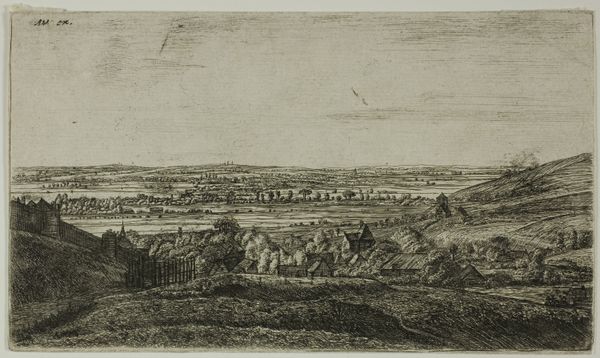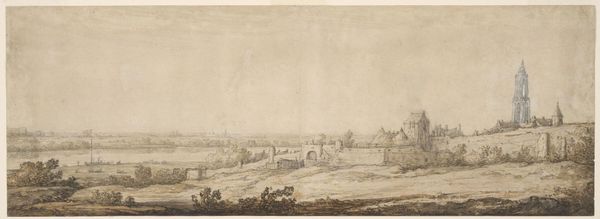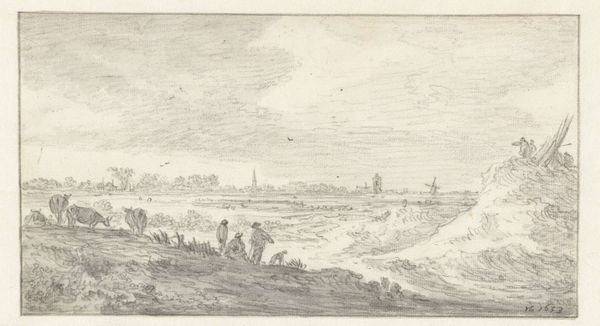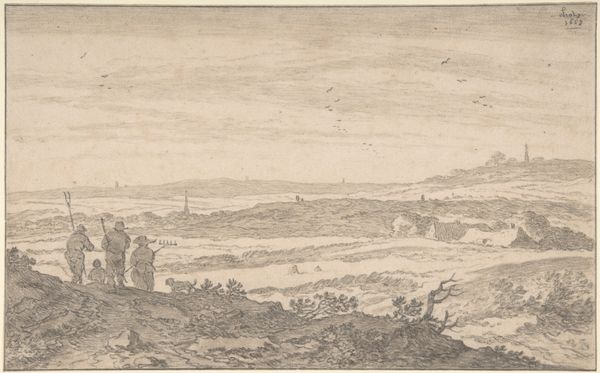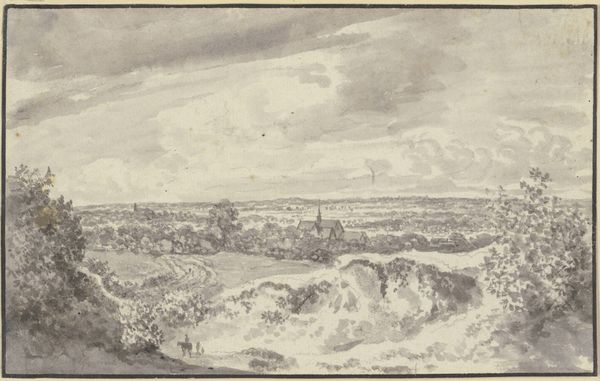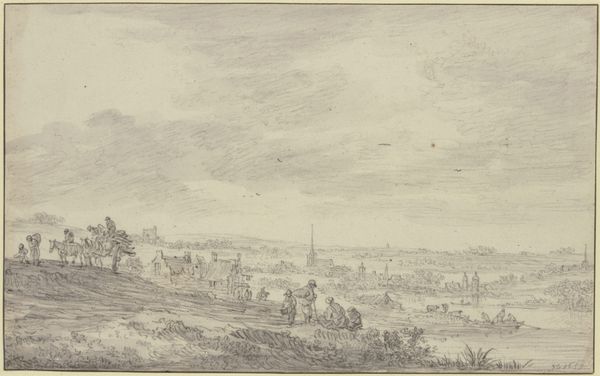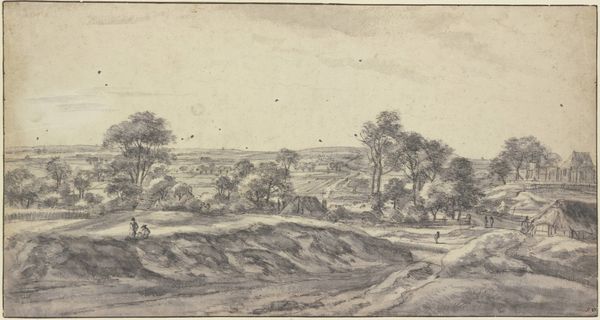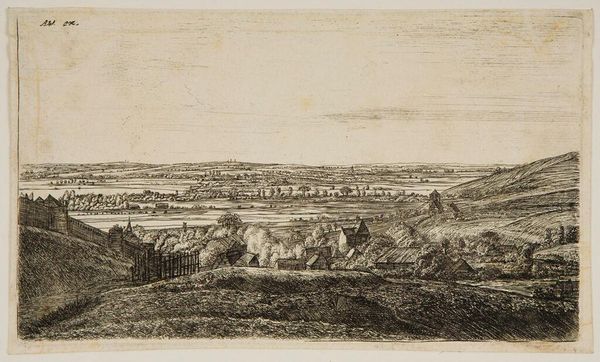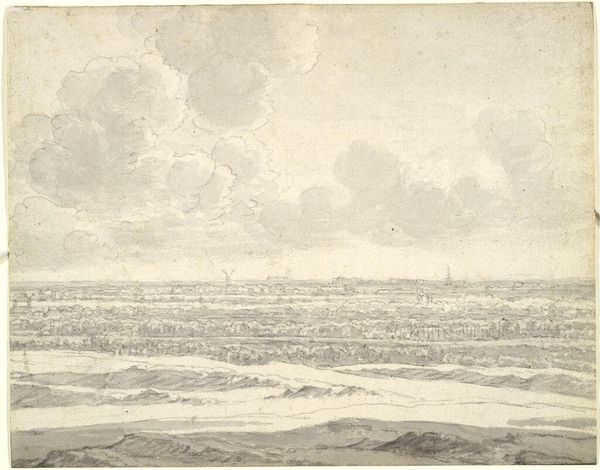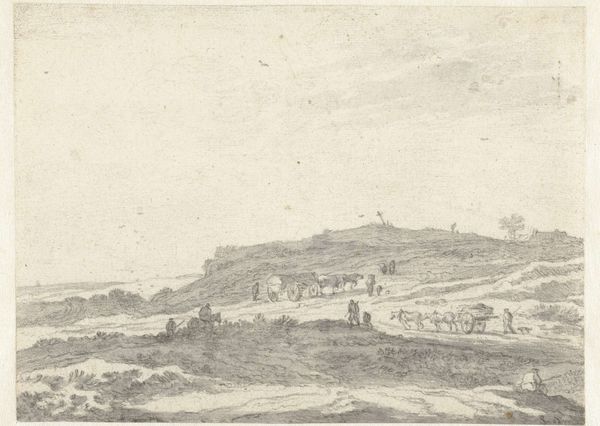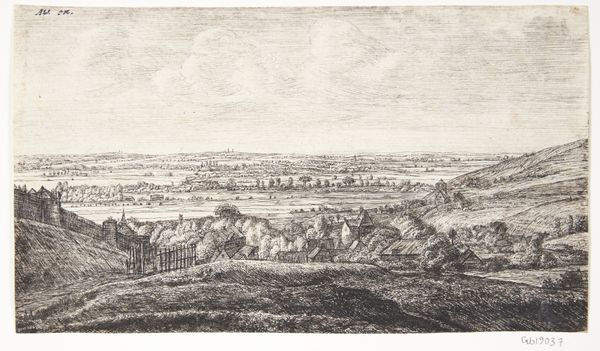
drawing, pencil
#
drawing
#
dutch-golden-age
#
landscape
#
pencil
#
realism
Dimensions: height 339 mm, width 315 mm
Copyright: Rijks Museum: Open Domain
Curator: This pencil drawing, created by Anthonie Waterloo sometime between 1619 and 1690, presents us with a 'View from the Dunes at Bloemendaal.' It’s quite a lovely example of Dutch Golden Age landscape art, housed right here at the Rijksmuseum. Editor: My first impression is how muted it is, almost monochromatic. And yet, there’s a tranquility in its soft gradients, this calm expanse...a sense of air. I immediately fixate on how the lines converge toward the horizon, creating depth and drawing my eye into the composition. Curator: Indeed, that tranquility reflects a burgeoning civic pride of the Dutch Republic. We see here a desire to document and celebrate the local landscape and project prosperity and security. Landscapes such as these served almost as visual emblems of Dutch identity. Editor: Right. And the way he handles light is remarkable; the overcast sky almost feels illuminated from within, especially juxtaposed against the heavier textures of the foliage in the foreground. Note how he varies the strokes of the pencil to create distinctions of surface. Curator: You are pinpointing the mastery with which he translates observational details, such as the town layout into this rather elegant visual narrative. The presence of the church is of paramount interest—suggesting divine favour for the people inhabiting it. Editor: The muted tones also add an historical gravity to this. The artist gives the houses equal attention within this piece, too. Even without the church steeple, that element could be construed as visually supporting, quite literally propping up, the expansive sky above. Curator: Exactly! The seemingly humble scene is elevated by the technical artistry, embedding this view of Bloemendaal firmly into the developing cultural identity of the Golden Age. Editor: Waterloo has captured not just the lay of the land, but almost a palpable feeling of what it was like to be there, witnessing it all those centuries ago. Curator: Ultimately, the artwork embodies that specific era—both in terms of subject matter and stylistic rendering. Editor: I think that even now it offers a contemplative experience, despite its deceptive simplicity.
Comments
No comments
Be the first to comment and join the conversation on the ultimate creative platform.
